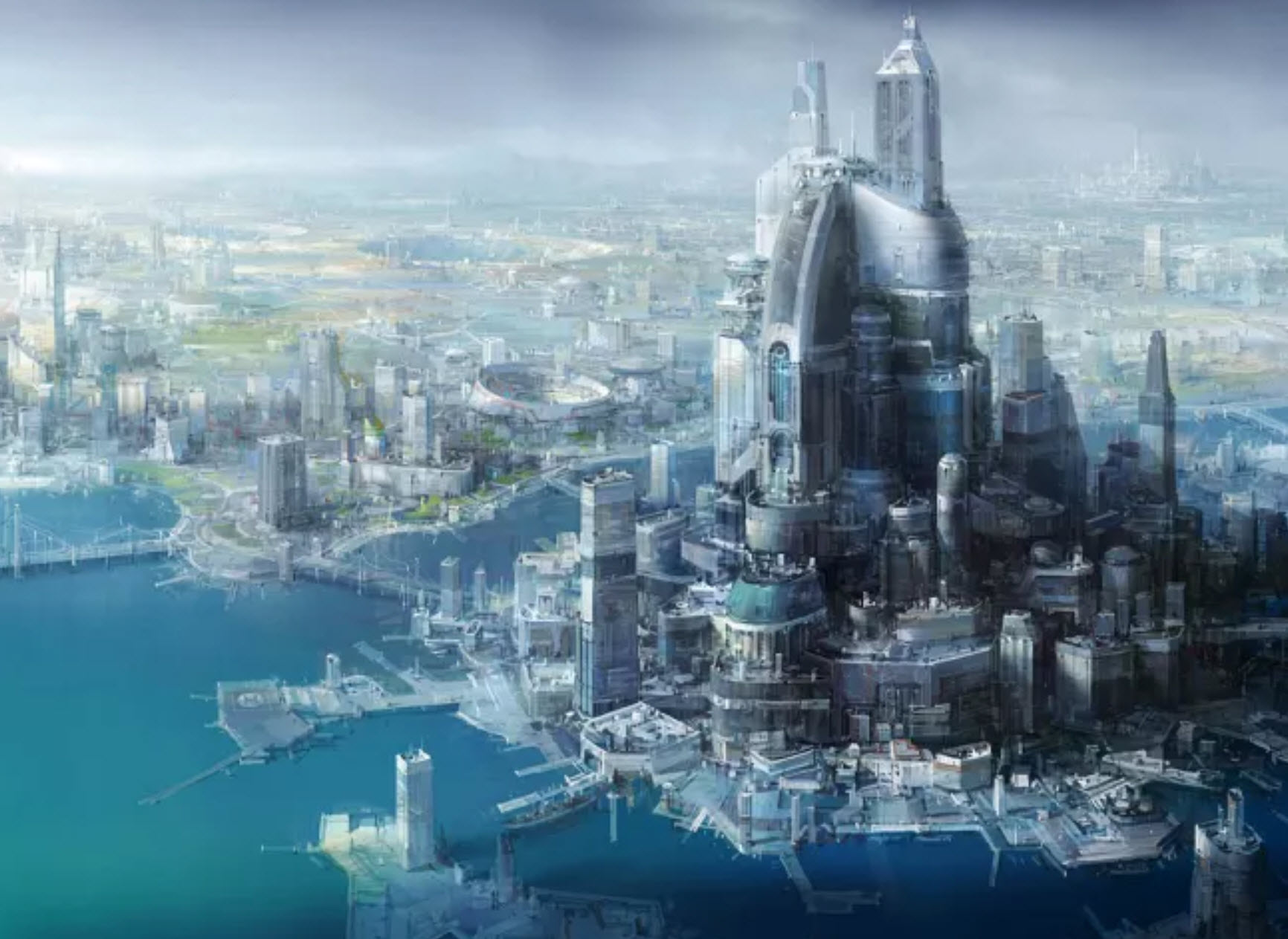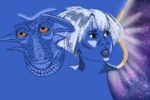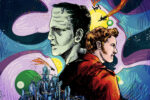As someone who has become fatigued with what feels like an endless loop of the same news headlines, editorial content and perspectives offered on the world as it changes, searching for fresh written content can be frustrating.
It is the same frustration you might feel when you realize you have been in the echo chambers of Facebook, Twitter or Instagram for just a bit too long. It can make you wonder if original thought will survive the next year of society’s ongoing attrition.
Fortunately, I stumbled across the website Futurism and promptly had my hopes restored. It’s a breath of fresh air compared to typical destinations on the web, with content ranging from articles like “Best Erotic Sci-Fi Art,” which I recommend, to “Why Flat Earth Theory Matters,” which I look forward to reading. The site’s organization is not perfect, as everything is cross-referenced and many of the writers post irregularly, but the diversity of thought and the quality of writing is impressive, especially in the science fiction category.
The site based on the idea that sci-fi is future news, the would-be news — the stories that are fiction, but could be rendered mundane facts of life sooner or later depending on which direction technological progress takes the world in years to come.
So, here are the top four stories on Futurism, and why they make the site otherworldly.
1. Traveler: A Glimpse of the New World Order
It took me a moment to absorb how grim the plot of this story is. The New World Order, existent thanks to a group that parallels hacktivist group, Anonymous, is one where “all belong everywhere” but where “food [is] stretched too thin for ordinary folk to obtain.”
If you have money in this world, you have travel also, so food is not a problem — if you are not rich, you end up like Valon, the main character, who details her short stop in Italy as part of her international voyage for daily survival. “Traveler” emphasizes the depth of our current societal problems, suggesting they may be permanent and direct consequences of hyper globalization.

The central question brought to light is whether equality is a lost cause. Even though in the New World Order language barriers are obsolete, language still indicates status. Valon uses a translator to speak to the vendor in Italy, letting on that she is not one of “those with money” for whom travel is easy.
Consequently, she is rushed through her transaction as if she is less human than someone who is rich. The unfairness described is subtle, just as microaggressions make subtle appearances in real life.
Other parallels drawn from real life including food deserts, the dialect African-American Vernacular English (AAVE) being looked down upon and the potential of Uber Air and other services to deepen the division between those who can afford to keep up with technology and those who lag behind, like Valon.
2. Fog of War: Mud and Blood
What stands out about this story is how it reads: like a vivid nightmare where good no longer exists, only different forms of suffering. The author’s point is to personalize the soldier’s struggle in a way that is similar to the movie “Saving Private Ryan,” so the violence and how the hero manages to cope feels intimate.
As a reader, you simply want the main character, an average soldier, to survive. The author writes that he could “taste the spent munitions in the air, and the dull undertone of death.” One of the most impactful lines stresses that he had not seen the enemy, but he had seen plenty of death, and describes death being “hung helplessly on the wires beyond the trench” and “sinking deep into the trenches themselves.”
His only task at hand is to make it onto the battlefield, where nearly all his comrades have already died, and where he sees a man go only to report right afterward that it “began to rain mud and blood.” Whatever enemy they were facing obliterated the soldiers completely, and it seems their situation only proceeds to get worse and worse.
After what feels like forever, the soldier is out of the trench, still alive, and begins searching for the enemy. The loud and hectic trench scene seems another universe away, and there is silence as he navigates through the mud of the field, fog overwhelming him.
A testament to his fear and the lowness of his situation, he longs for the noise to come back, despite just describing the horror of it. Then, almost instantly, he goes from searching for the enemy to finding him — hearing its “pitter patter of feet in mud,” then seeing its five legs — the legs of a war bot — above him, as he dies.
All of this I interpret essentially as another version of Plato’s timeless quote: “Only the dead has seen the end of war,” meaning wars will only evolve, never end. But more importantly, before wars are fought on even ground, for example drones vs. drones, they will at one point be fought between man and drone and be hopelessly unfair.
3. Eradicate: Part One
The most confusing, entertaining but also plausible tale on this list, “Eradicate” centers around a forensic scientist finding a missing body, only to watch it be swallowed by the earth as if intentional chemical reactions accelerated the process of decomposition. The context of this story is overpopulation, and the card reading “project green” the scientist finds in the mouth of the missing corpse suggests the government’s role in reversing the population boom.
The scientist salvages the remains of the body and quickly becomes suspicious of her technician’s relatively calm demeanor toward her discovery. When she decides to double check the body bag, she finds the remains a deer.

The technician then tries to kill the scientist in order to contain the secret but ends up dead himself. After several consecutive plot twists, the story is left to be continued, leaving readers hopeful that Part Two will bring at least some answers.
Regardless of the puzzling decisions of the author, “Eradicate” makes the reader wonder how powerful chemical and biological weaponry is and whether overpopulation would lead to such barbarism as covering up deaths to keep numbers down.
The increasing sophistication we see of technology and biological devices brings into question whether practices, like those of sterilization in the 1920s, were the end or just the beginning of the government’s work on population control. Super creepy.
4. Mother Earth: An Ecological Fable
For environmentalists or lovers of literature alike, this story is gold. The First Man doesn’t even appear until about a quarter of the way through it; it’s just Mother Earth, “shapeless” and having “folds of fat,” but still beautiful, being her charming self. Ultimately though, it is a story of loss of innocence and the destructive nature of mankind.
The charming Mother Earth grows old, and her “tears of loneliness” form a lake, eventually causing civilizations to appear.
Conflict soon develops between the camp on her left breast, whose chief is the First Man and who acknowledges her as his mother, and the one on her right breast. Some villagers “hear her voice in the breath of wind and cry of the loon,” while others turn away.
The First Man ends up being killed by a mob from the left breast who do not understand his ancient ways. The mob continues their destructive behavior and provokes Mother Earth, who causes a volcano to erupt and kill much of their population.
Desperate to blame someone and blind to the consequences of their own actions, as much of our population is today, the left breast camp’s mob vows to conquer nature. Their ultimate blow to Mother Earth, which symbolizes the rise of artificiality and the destructive nature of mankind, is their discovery of the patch of hair between her legs. Whereas the First Man would not care to even go there, the left breast chief yells out proudly and with irreverence “Earth is a woman!” upon arrival.
These four stories are grouped together because they combine shock value with quality writing and good style choices. The voice in “Traveler,” the imagery of “Fog of War” and the character development and humor in “Mother Earth” contribute to a collection of striking short stories.
Each in their own way made me question what planet the authors were really from, and left me genuinely surprised that the span of sci-fi was so eclectic, which is a testament to the site. It is also encouraging that they were entertaining yet had enough depth to stick in my mind for days.

















